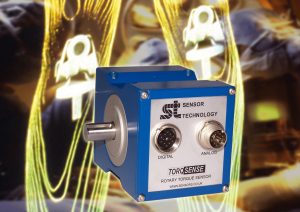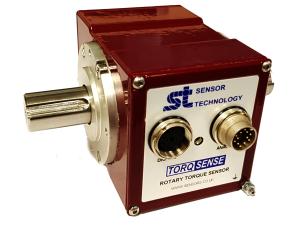A medical researcher is using an industrial torque sensor to analyse the performance of implanted replacement knee joints, hoping to increase the understanding of their long term post-surgery performance.
Judith Lane is running the programme between now and the end of 2007 at Queen Margaret University College in Edinburgh. As well as this research, which should lead to the awarding of a PhD, she holds a Masters degree in bio-engineering, is a qualified physiotherapist and lectures at both undergraduate and postgraduate level in the School of Health Sciences.
 Before she could begin her latest research she had to design, build and validate a rig that could assess the performance of patients’ artificial joints.
Before she could begin her latest research she had to design, build and validate a rig that could assess the performance of patients’ artificial joints.
“Most replacement knee joint surgery is extremely successful, but a few patients don’t achieve the function we’d expect,” she says. “By exploring the relationship between function and stiffness, this research hopes to reveal if stiffness in the joint is the reason why.”
To do this she has developed a rig centred on a 100Nm TorqSense transducer from Sensor Technology, with an extended through shaft supporting crank arms on both ends.
“We very carefully align the axis of the TorqSense with the patient’s knee and attach the ankle to the end of one crank. We can then use the other crank to move the knee without the patient having to put in any muscular effort, thus we have isolated the joint and can run through a series of tests with the TorqSense constantly monitoring torque so that we that build up a profile of the knee’s performance.”
TorqSense is unique in that the sensing head does not contact the shaft under test, so exerts no back torque that has to be accounted for in calculations. Instead two piezo-ceramic combs, designed to deform microscopically as torque in the shaft changes, are glued to the shaft and monitored over a radio wave connection. Because the combs are based on piezo technology they can be supplied with sufficient operating power via the radio signals. Their electro resistive characteristics vary with the deformation, changing the output radio signal proportionally to the torque in the shaft.
“By using the TorqSense transducer, we can calculate the resistance to movement created by soft tissues around the knee, at any point in range,” explains Lane.
For each patient Lane will take several readings to develop a picture of the dynamics of the knee joint. This data will then be correlated with the findings from a battery of tests to establish ability to undertake common activities of daily such as climbing stairs, sitting down and getting into the bath.
“By cross referencing the two sets of data we should be able to build up an exact profile of the joint’s performance, and assist decision-making between the patient, physiotherapist and orthopaedic surgeon relating to future treatment.”





